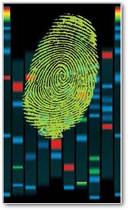Forensic Science: The Truth Can Set Them Free

By Patti Dobranski
Forensic ScienceImagine spending more than half of your life in prison for a crime you did not commit. Microscopic hair evidence presented in a 1978 murder case in Washington, D.C., made this a reality for Santae A. Tribble.
But after 28 years behind bars, Tribble, now 51, has been set free by recent DNA testing of that hair, which ultimately excluded him as the killer.
Science Steps In
Questions about the reliability of past DNA evidence inspired the National Academy of Sciences (NAS) to ask the White House and Congress to remove crime labs from both law enforcement and prosecutors’ control. At the very least, the NAS would like to strengthen the presence of science and standards of the nation’s forensic science system.
In response to this movement, the U.S. Department of Justice and the FBI are now reviewing thousands of criminal cases to see if any defendants were indeed wrongly accused or entitled to a new trial. Why? Tribble’s case is not so unusual.
Unreliable Past Evidence
Since 1989, there are virtually tens of thousands of cases where prime suspects were identified and pursued — until DNA testing (prior to conviction) proved that they were wrongly accused, according to the Innocence Project, a New York-based organization founded in 1992 to assist prisoners who could be exonerated through DNA evidence.
Government officials have not yet decided when they would notify defense attorneys or the Innocence Project about new scientific findings or components of the new FBI review process.
Classroom Discussion
- Do you think the National Academy of Sciences should be in control of the nation’s forensic science system with no input from the Justice Department or the FBI? Why or why not?
- Can you think of any other areas of government where scientific input can improve the system and/or the quality of life in the U.S.?

